Magic in Malmo
At the opening ceremony to kick off the 2018 Tepe Sigeman & Co tournament, founder and lead sponsor Johan Sigeman, invoked the name of 'the Magician from Riga', Mikhail Tal, holding a book of his games aloft as a prop. After inspirational opening remarks on the merits of chess education, Mr. Sigeman marvelled that the tournament has returned for consecutive years, following two years in which the event was not held (2015 and 2016). The 2017 tournament, was the first with a new named sponsor TePe, a Swedish manufacturer of dental products, and was won by Nils Grandelius and Baadur Jobava, who tied for first with one win and four draws apiece.
Mr. Sigeman, speaking to a room of around 70 guests, said that being able to once again mark the start of the tournament at the historic Malmo Town Hall was, for him, "like magic". As if to drive home the point, the entertainment for the evening was provided by an actual magician.
The mayor of the city, Kent Andersson, opened the evening by highlighting some of the region's history, calling special attention to a painting of the 11th-century Danish king Knut, who was canonized in 1101 as the patron saint of Denmark. (Malmo was a part of Denmark until the 17th century.)
After the drawing of lots, the players and guests adjourned to the adjacent Knut Hall, whose mirrored walls and vaulted ceiling evoke the French Palace of Versailles, for a buffet dinner.
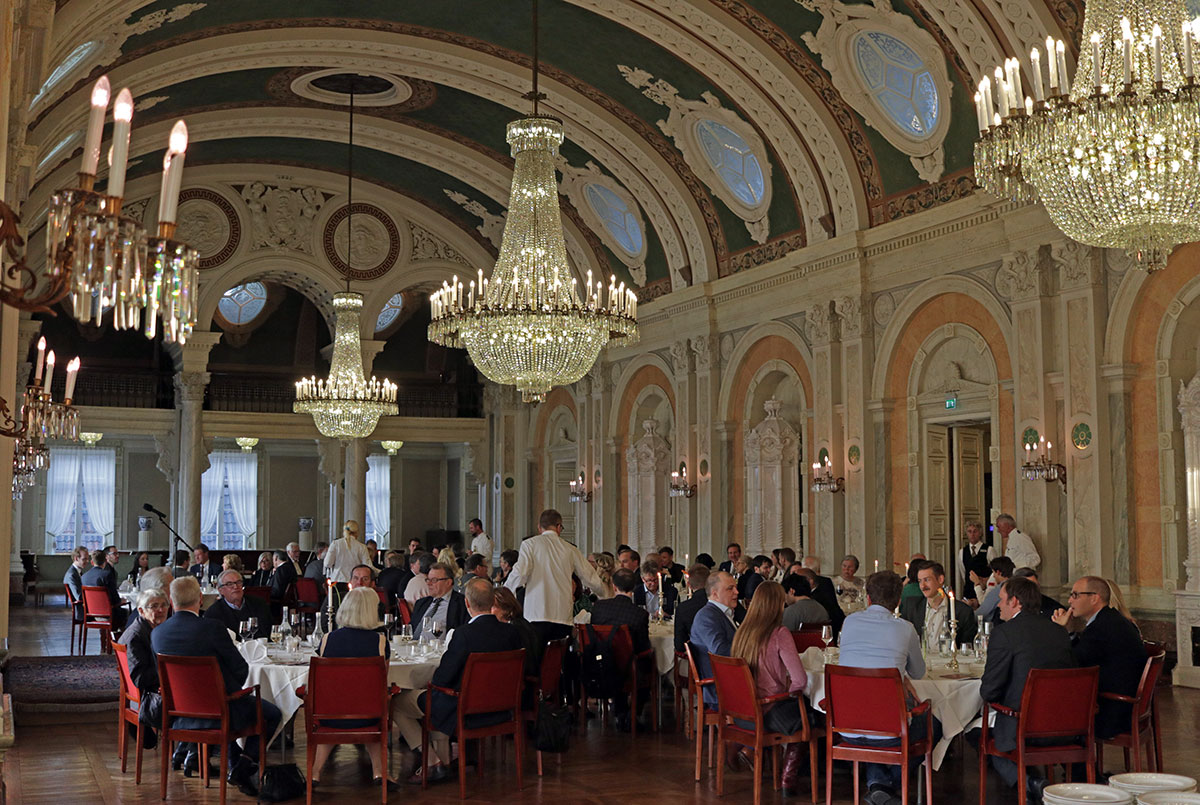
Knut hall — see photo gallery above for more
Round 1
Nils Grandelius intimated during his introduction at the opening ceremony that he was glad to be back defending his first place finish in last year's tournament. A year ago he started with three draws before scoring his only win against the much lower rated Erik Blomqvist. This time he's grabbed an early lead and seemed totally in control against Benjamin Gledura, the 18-year-old talent from Hungary.
After the game, Grandelius chastised himself a bit for unnecessarily complicating instead of playing simply, but what can you expect from such a brash player.
Grandelius 1-0 Gledura (annotated by GM Tiger Hillarp Persson)
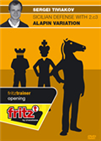 Sergei Tiviakov started playing the line 1.e4 c5 2.c3 in the Sicilian Defence as White in 1988. Since then, he has employed it in more than 100 games, including a yearlong period when he I managed to win twelve 2.c3-games in a row. White tries to occupy the centre with a second pawn, and Black must know his stuff very well in order to be able to equalize. And this is only possible with 2...Nf6 – all other lines give the first player a small edge everywhere. Especially against stronger opponents, 2.c3 is an excellent weapon.
Sergei Tiviakov started playing the line 1.e4 c5 2.c3 in the Sicilian Defence as White in 1988. Since then, he has employed it in more than 100 games, including a yearlong period when he I managed to win twelve 2.c3-games in a row. White tries to occupy the centre with a second pawn, and Black must know his stuff very well in order to be able to equalize. And this is only possible with 2...Nf6 – all other lines give the first player a small edge everywhere. Especially against stronger opponents, 2.c3 is an excellent weapon.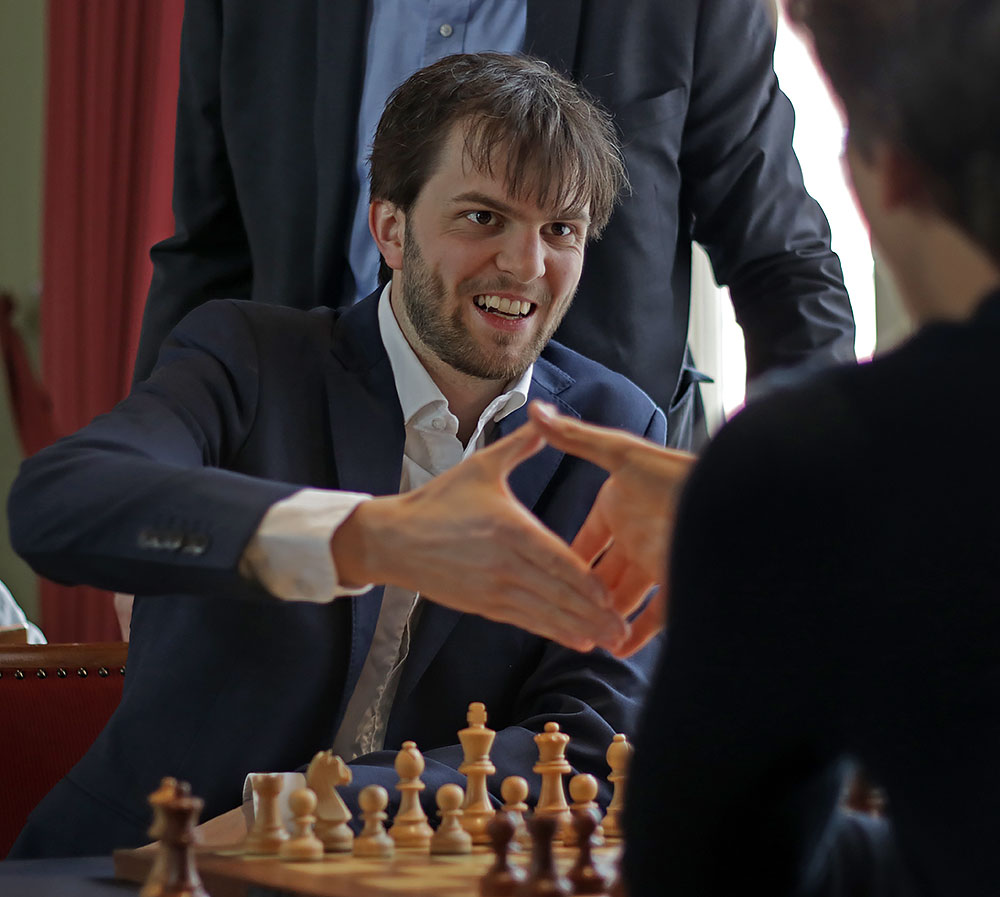
Nils has the hot hand so far | Photo: Macauley Peterson
After analysing together Nils and offered commiserations:
“What to do? White tomorrow...”
“No black”
“Ah black again!?”
"Against Morozevich."
"Oh, well good luck."
Speaking of 'Moro', the former world number two Alexander Morozevich was evidently glad to receive a low pairing number at the opening drawing of lots, giving him three black games.

Morozevich, sporting his new Wyatt Earp moustache | Photo: Macauley Peterson
Johansson ½-½ Morozevich
His first round effort against Linus Johansson followed unconventional lines in a Reti opening, and after just 25 moves the players traded down into an endgame of king, bishop and knight for both sides. In an equal position, Morozevich boldly launched his f-pawn in a bid to gain connected passers on the queenside:
Move the pieces on the live diagram
27...f5?! A creative idea, the point is after 28.e5 f4?!, a temporary pawn sacrifice, 29.Kxf4 Nd5+ 30.Ke4 Nc3+ Black wins the a2 pawn. The problem is, he is clearly worse if White were to notice that 31.Ke3 Nxa2 32.Ne6+ Kg8 he would win the g6-pawn after 33.Bd3 and likely the game.
Instead 33.Nd8 allows the knight to be dominated after 33...Bd5 34.Kd4 (34.e6 Kf8 is no help) 34...Nb4, and Johanssen opted to exchange the bishops leaving a drawn knight ending.
Linus, the local hero, remarked on his underdog status as a non-professional player at the opening ceremony and said he would savour any points he could manage.
Morozevich, who arrived five minutes after the round began and also left hurriedly after the game, was maybe kicking himself for not taking advantage of the massive rating disparity afforded by his first-round pairing. Or perhaps he just had a date for another Go game — he was also the first player to depart Thursday's opening dinner, once the opportunity presented itself to play a few games of Go against Swedish GM (and ChessBase contributor) Tiger Hillarp Persson in the lobby of the players' hotel.
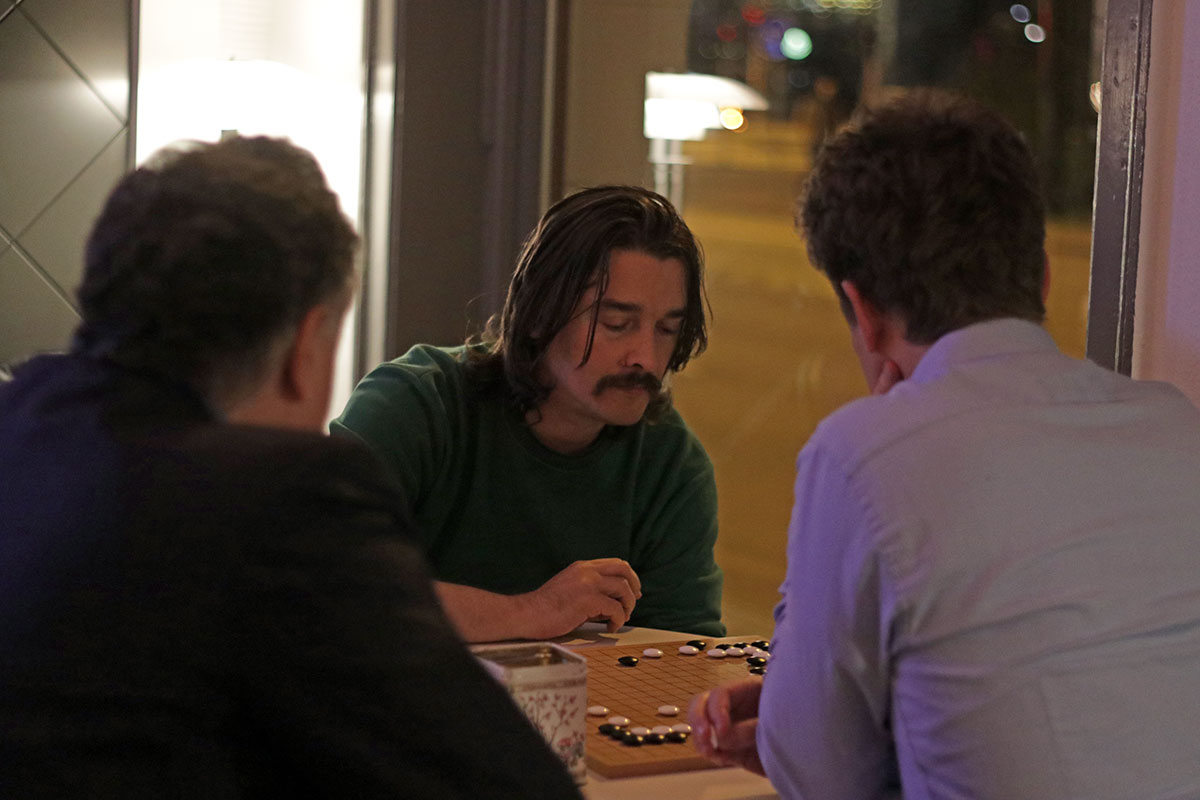
Morozevich takes Go seriously against Tiger | Photo: Macauley Peterson
Tari ½-½ Vidit
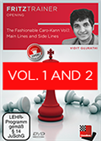 The Caro Kann is a very tricky opening. Black’s play is based on controlling and fighting for key light squares. It is a line which was very fashionable in late 90s and early 2000s due to the successes of greats like Karpov, Anand, Dreev etc. Recently due to strong engines lot of key developments have been made and some new lines have been introduced, while others have been refuted altogether. I have analyzed the new trends carefully and found some new ideas for Black.
The Caro Kann is a very tricky opening. Black’s play is based on controlling and fighting for key light squares. It is a line which was very fashionable in late 90s and early 2000s due to the successes of greats like Karpov, Anand, Dreev etc. Recently due to strong engines lot of key developments have been made and some new lines have been introduced, while others have been refuted altogether. I have analyzed the new trends carefully and found some new ideas for Black.Vidit Gujrathi, the top seed, won the Tata Steel Chess Challengers tournament and reached a new peak rating of 2723. He slipped back a bit at the Aeroflot Open in February but is still the Elo favourite in Malmo by a wide margin. He's 23 years old, and is looking forward to playing alongside Vishy Anand for India's Olympiad team.
 Aryan Tari is the current World Junior Champion, and is at his peak rating of 2603. He also played in Wijk aan Zee in January alongside Vidit, but finished three points back, tied for 8th-10th places. Like Vidit he has played alongside a World Champion at the Olympiad. Whether he will have a chance to repeat this in Batumi remains to be seen.
Aryan Tari is the current World Junior Champion, and is at his peak rating of 2603. He also played in Wijk aan Zee in January alongside Vidit, but finished three points back, tied for 8th-10th places. Like Vidit he has played alongside a World Champion at the Olympiad. Whether he will have a chance to repeat this in Batumi remains to be seen.
In the near future, after Sigeman, the next challenge before him is to finish out his high school semester. Exams are looming in June. Once school gets out, he expects to take time to focus on being a chess professional.
The game followed a Sicilian Four Knights variation that Tari had prepared for his game at Tata Steel Chess against Michael Krasenkow. It's a curious line were White voluntarily strands his king in the centre, blocking his own bishop in exchange for play against Black's weak dark squares.
Vidit's preparation went quite deep as well, and he noted afterwards that the position after 17...Be4 had been reached in a game Teimour Radjabov won (in 2007).
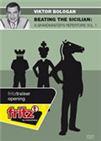 Out of the dozens and dozens of openings played nowadays the Sicilian Defence remains the most fascinating, entertaining and complex opening. Here White understands that Black will not be a patient lamb but will try to get at him at the very first opportunity. This series includes the Sveshnikov/Cheliabinsk Variation, the Rauzer Attack, the Maroczy Bind and a few other minor sidelines. The approach is typical for Bologan’s videos, as he tries to describe, in a compact format, plans and reactions from White’s point of view. Forget about fears concerning the tons of theory in the Open Sicilian and can get straight into the real fight!
Out of the dozens and dozens of openings played nowadays the Sicilian Defence remains the most fascinating, entertaining and complex opening. Here White understands that Black will not be a patient lamb but will try to get at him at the very first opportunity. This series includes the Sveshnikov/Cheliabinsk Variation, the Rauzer Attack, the Maroczy Bind and a few other minor sidelines. The approach is typical for Bologan’s videos, as he tries to describe, in a compact format, plans and reactions from White’s point of view. Forget about fears concerning the tons of theory in the Open Sicilian and can get straight into the real fight!
18.Rg1 was the first new move. "My idea was to play g4, but somehow I never got it to work", Tari explained.
White's king looked a bit shakey, stuck in the centre of the board after a small tour e1-e2-d1-e1, and yet, the engines prefer Tari's position, particularly after 25.Qa3.
25...a5 was played but the pawn becomes a weakness. Vidit observed the nice line 25...Qg6 26.b4 and was looking at 26...Qf6, with the idea of 27.b5 Qh4! 28.g3 Qxh2 winning as 29.bxc6 is bet by Rf2! and mate in eight. But Vidit saw that 27.g3 is just better for White and therefore abandoned the line.

Click or tap to expand photo | Photo: Macauley Peterson
A dozen moves later, after several pieces were exchanged, Tari's king completed a further trek from e1-e2-d2-c1-d2-e1, where it was met by Vidit's queen and a perpetual check.
Standings after one round
All games of the round
Links
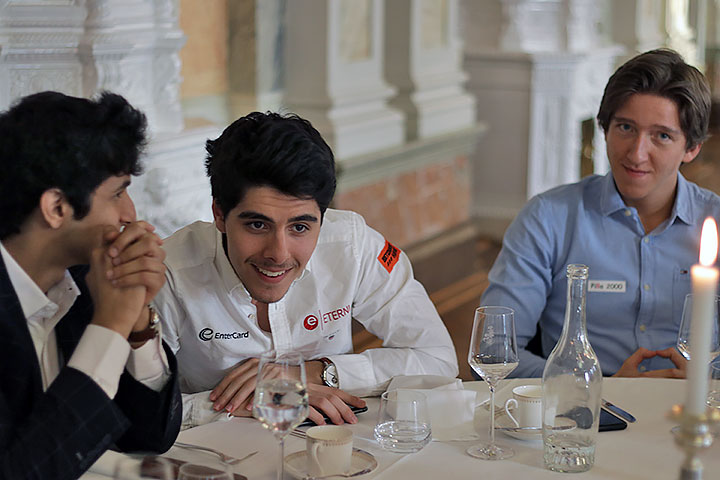














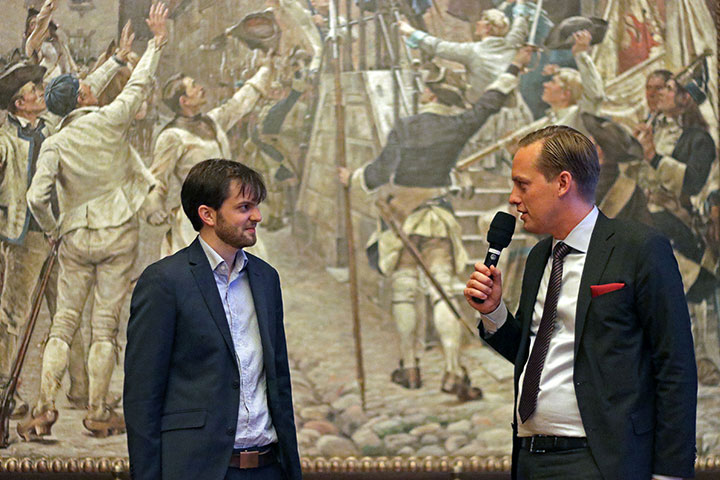












 Aryan Tari is the current World Junior Champion, and is at his peak rating of 2603. He also played in Wijk aan Zee in January alongside Vidit, but finished three points back, tied for 8th-10th places. Like Vidit he has played alongside a World Champion at the Olympiad. Whether he will have a chance to repeat this in Batumi remains to be seen.
Aryan Tari is the current World Junior Champion, and is at his peak rating of 2603. He also played in Wijk aan Zee in January alongside Vidit, but finished three points back, tied for 8th-10th places. Like Vidit he has played alongside a World Champion at the Olympiad. Whether he will have a chance to repeat this in Batumi remains to be seen.





